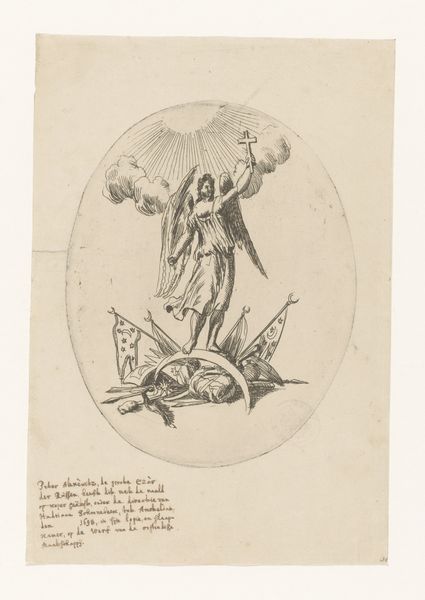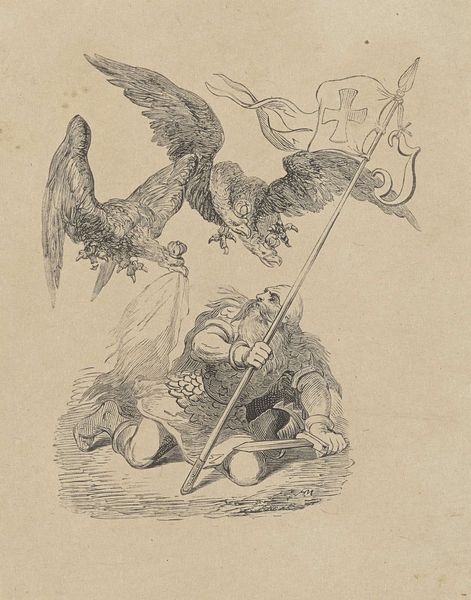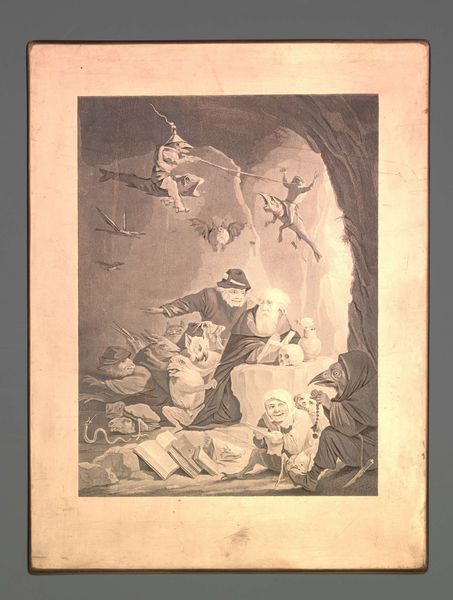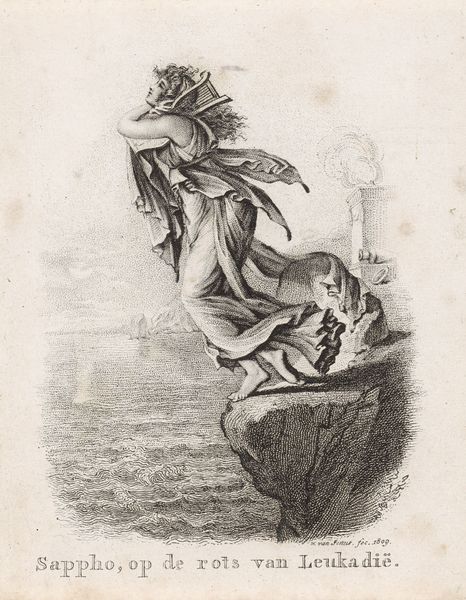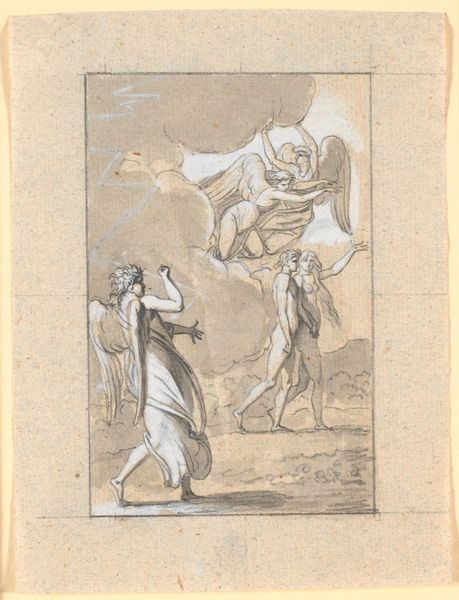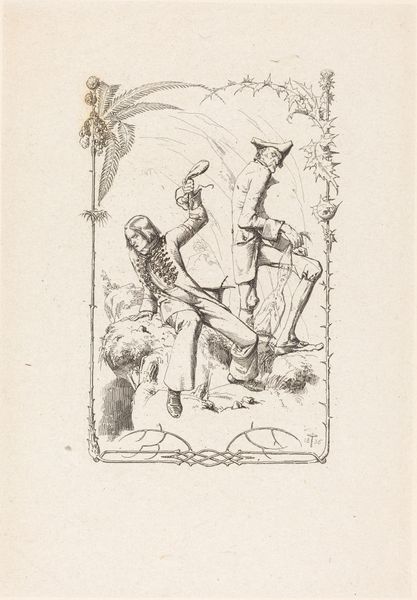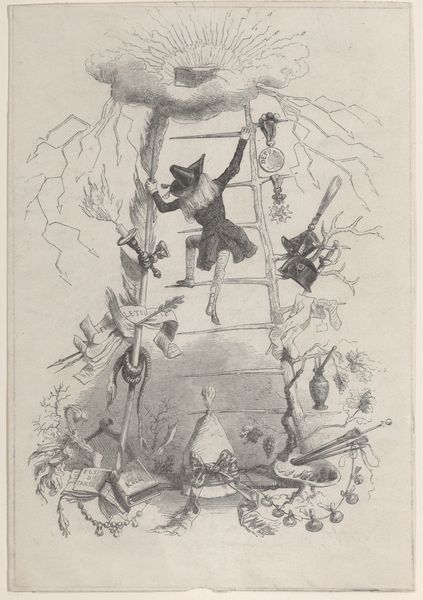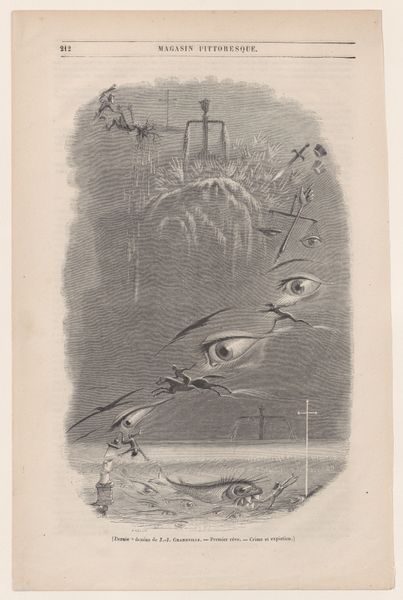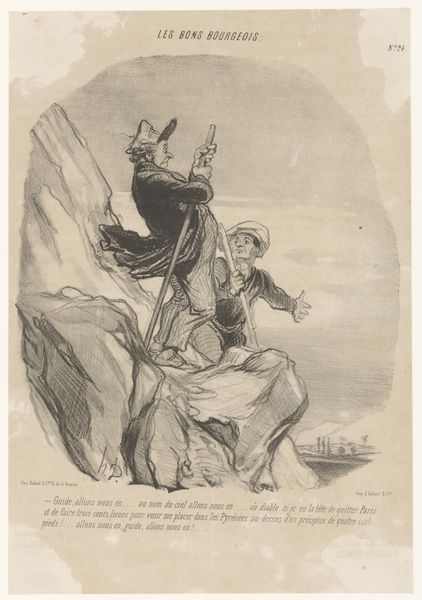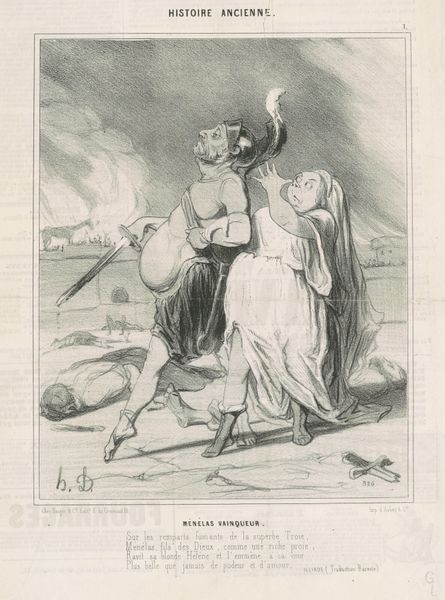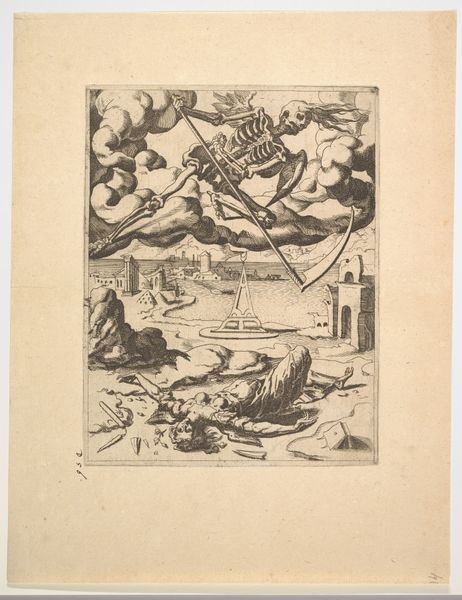
Udkast til titelkobber til P. Løvenørns Anviisning for de Seilende i Kattegattet 1800
0:00
0:00
drawing, ink
#
drawing
#
ink drawing
#
allegory
#
landscape
#
figuration
#
ink
#
romanticism
#
history-painting
Dimensions: 239 mm (height) x 178 mm (width) (bladmaal)
Editor: So this ink drawing, "Udkast til titelkobber til P. Løvenørns Anviisning for de Seilende i Kattegattet," from 1800 by J.F. Clemens… It feels like such a formal depiction, yet with a melancholic air given the lone figure and the swirling waves. How would you interpret this work? Curator: Focusing on the historical context and material conditions of its creation, we see an allegorical representation of maritime navigation. Consider the very function of this piece: a draft for an engraved title page. What does it tell us about the relationship between art, industry, and the dissemination of knowledge in that era? Editor: That’s interesting… I hadn’t considered it as something functional. How does the medium – ink on paper – play into this? Curator: The choice of ink suggests accessibility and reproducibility, key for disseminating information to sailors navigating the Kattegat. Notice the contrast: the ethereal, allegorical figures against the practical image of the lighthouse, which represents constructed infrastructure designed to serve maritime activity. How might Clemens be negotiating between idealized artistic expression and practical utility? Editor: So, the artwork itself embodies this tension between art and labor. And the landscape, does that influence the relationship at all? Curator: Absolutely. Romanticism is definitely at play in this work through its dramatic landscape elements and exploration of the sublime. In what ways does Clemens present landscape here as another element manufactured to suit navigation? Editor: It makes you consider who is benefitting from maritime advancement; from whose labour do they take. It is a pretty charged drawing. Curator: Exactly. It makes you appreciate the multifaceted ways in which artists engaged with the societal structures and technological advances of their time. Editor: This perspective definitely sheds light on understanding artworks within broader economic systems.
Comments
No comments
Be the first to comment and join the conversation on the ultimate creative platform.
